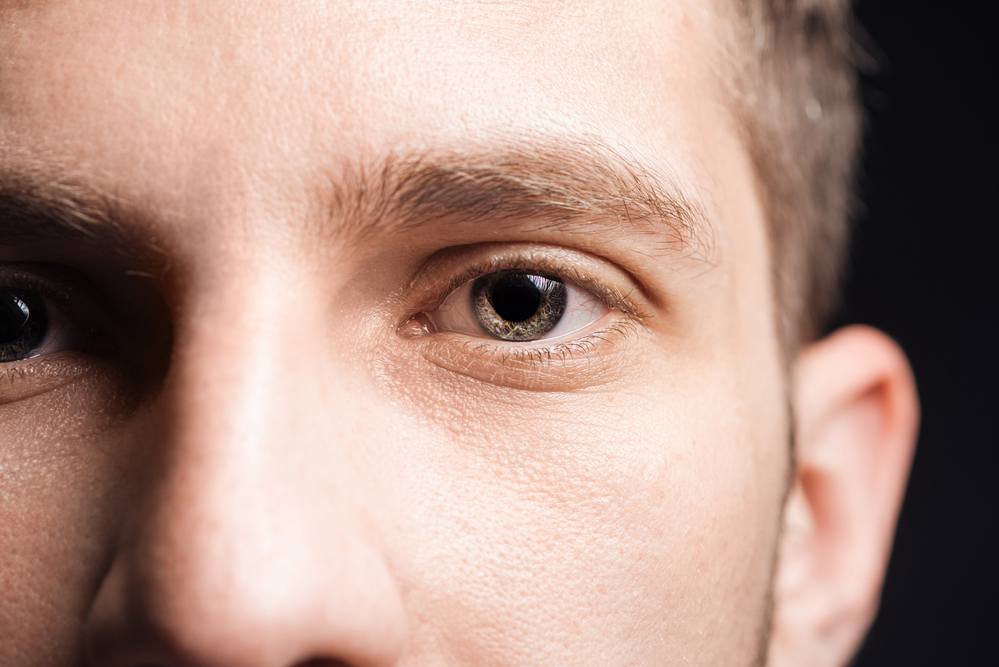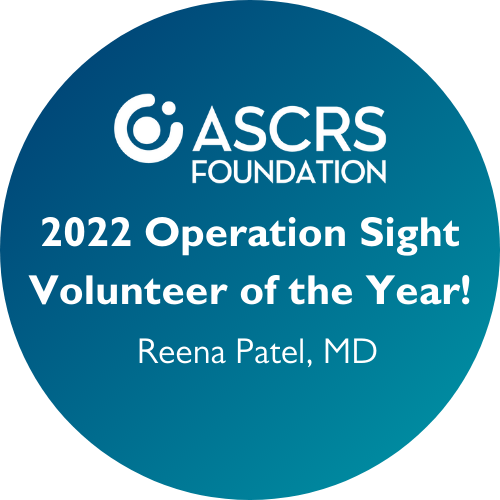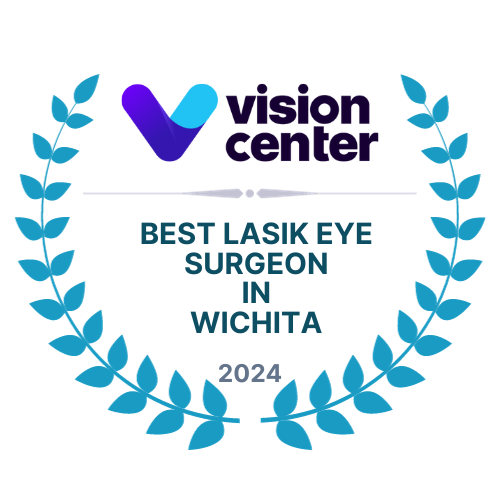Preparing for LASIK (Laser-Assisted in Situ Keratomileusis) surgery with us at Wichita Vision Institute in Wichita, KS, is an important step towards achieving clear, improved vision. Proper preparation helps ensure a smooth and successful procedure, as well as a speedy recovery. If you’re considering this surgery, it’s natural to have questions about what you can do to prepare yourself. Read on to find out how you can optimize your readiness for the procedure and increase the likelihood of a positive outcome.
How Do You Prepare for LASIK?
Preparing for this surgery involves several important steps to ensure a successful and smooth procedure. Here are some key preparations to consider:
Consultation and Evaluation
Schedule a consultation with a reputable LASIK surgeon to determine your candidacy for the procedure.
Stop Wearing Contact Lenses
Prior to the evaluation and surgery, you’ll be instructed to stop wearing contact lenses for a specific period. This allows your corneas to return to their natural shape and ensures accurate measurements for the surgical planning.
Arrange Transportation
On the day of the surgery, you’ll be unable to drive immediately afterward due to potential vision blurriness and discomfort. Arrange for a family member or friend to drive you to and from the surgical center.
Follow Preoperative Instructions
Your LASIK surgeon will provide you with specific instructions to follow before the surgery. This may include avoiding eye makeup, skincare products, and perfumes on the day of the procedure. It’s important to adhere to these instructions to minimize the risk of infection or complications.
Arrange for Recovery Time
Plan for a few days off work or other responsibilities to allow for a smooth recovery. Resting your eyes and avoiding strenuous activities or contact sports during this time is recommended.
Address Postoperative Care
Understand the postoperative care instructions provided by your surgeon. This may include using prescribed eye drops, wearing protective eyewear, and attending follow-up appointments to monitor your progress.
What Happens During the Consultation?
During a LASIK consultation, you will meet with a surgeon or an eye care professional to assess your eligibility for the procedure. Here’s what typically happens during the consultation:
Medical History Review
The consultation begins with a review of your medical history, including any existing eye conditions, previous eye surgeries, or underlying health issues. It’s important to provide accurate information to help the surgeon determine your suitability for this treatment.
Eye Examination
The eye care professional will conduct a comprehensive eye examination to evaluate the health of your eyes and determine the current prescription of your vision. This may involve measuring your visual acuity, testing your refractive error, and assessing the corneal thickness and shape.
Corneal Mapping
A detailed map of your cornea is created using specialized diagnostic tools such as corneal topography or wavefront analysis. This mapping provides precise measurements of your cornea’s curvature and thickness, helping the surgeon plan the LASIK procedure accurately.
Pupil and Iris Evaluation
The size and shape of your pupils and the color and texture of your iris will be examined to assess their suitability for treatment.
Tear Film Evaluation
The quality and quantity of your tear film will be assessed to ensure that your eyes have adequate lubrication for successful healing after surgery.
Discussion of LASIK Procedure
The surgeon will explain the procedure, its benefits, potential risks, and any alternative options that may be suitable for your specific eye condition. You can ask questions to clarify any concerns or doubts you may have.
Candidacy Assessment
Based on the information gathered from the examination and discussion, the surgeon will determine whether you are a suitable candidate. Factors such as corneal thickness, refractive error, and overall eye health will be considered.
Customized Treatment Plan
If you are deemed a suitable candidate, the surgeon will discuss the recommended treatment plan and provide details about the expected outcomes, including the potential improvement in your vision and any limitations or risks associated with the procedure.
By the end of the consultation, you should have a clear understanding of your eligibility for surgery, the potential benefits and risks, and the next steps if you decide to proceed with the surgery. The consultation is an important opportunity to gather information, address concerns, and make an informed decision about whether LASIK is the right option for you.
What Happens During Surgery?
During surgery, several steps are involved to reshape the cornea and correct refractive errors. Here’s a general overview of what happens during the procedure.
Anesthetic Eye Drops
Before the procedure begins, numbing eye drops are administered to ensure your comfort throughout the surgery. These drops will prevent you from feeling any pain or discomfort.
Creation of Flap
The surgeon uses a microkeratome or femtosecond laser to create a thin flap in the outer layer of the cornea. The surgeon may lift the flap or use a laser to create a hinged flap, depending on the specific technique used.
Corneal Reshaping
After the flap is created, the surgeon gently lifts it and uses an excimer laser to reshape the underlying corneal tissue. The laser delivers precise pulses of light, removing microscopic amounts of tissue to reshape the cornea based on your individual prescription.
Replacement of Flap
Once the corneal reshaping is complete, the surgeon carefully repositions the flap back into place. The flap adheres naturally without the need for stitches.
Postoperative Care
After the procedure, your surgeon will provide you with specific instructions to follow. You may be given protective goggles or shields to wear over your eyes to protect them during the initial healing period.
The procedure typically takes only a few minutes per eye, and both eyes are usually treated during the same session. The entire process, including preoperative preparations and postoperative care, may take a few hours.
How Can I Help Speed Up My Recovery Time?
Recovery time can vary from person to person, but there are several steps you can take to help speed up the healing process and optimize your recovery after surgery. Here are some tips to help you:
Follow Postoperative Instructions
Your surgeon will provide you with specific postoperative instructions. It’s crucial to follow them diligently, including using prescribed eye drops as directed, wearing protective eyewear, and avoiding rubbing your eyes.
Rest and Take Time Off
Plan to take a few days off work or any strenuous activities to allow your eyes to rest and heal properly. Avoid activities that may strain your eyes, such as reading, using electronic devices, or watching TV for extended periods.
Use Artificial Tears
Lubricating eye drops or artificial tears can help alleviate dryness and keep your eyes moisturized during the healing process. Follow our surgeon’s recommendations on the frequency and duration of using these drops.
Protect Your Eyes
Avoid exposing your eyes to irritants such as dust, smoke, or chemicals. Wear protective eyewear, especially when engaging in activities that may put your eyes at risk of injury.
Avoid Eye Makeup
It’s recommended to avoid wearing eye makeup for a few weeks after surgery. Makeup particles can introduce bacteria or irritate the eyes, potentially leading to complications.
Avoid Swimming and Hot Tubs
Steer clear of swimming pools, hot tubs, and other bodies of water for a few weeks following the surgery. Water can introduce bacteria and increase the risk of infection during the early stages of healing.
Protect Your Eyes from UV Rays
Wear sunglasses that provide 100% UV protection when you go outside, as sunlight can be harsh on your healing eyes. Choose wraparound sunglasses that offer ample coverage.
Attend Follow-Up Appointments
It’s important to attend all scheduled follow-up appointments with your surgeon. These visits allow the surgeon to monitor your healing progress, address any concerns, and ensure that you are on track for a successful recovery.
Maintain a Healthy Lifestyle
Eating a balanced diet, staying hydrated, and getting sufficient sleep can contribute to overall well-being and promote faster healing. Avoid smoking and minimize alcohol consumption, as these can impede the healing process.
Remember, every individual’s healing process is unique, and it’s essential to consult with your surgeon for personalized advice and guidance. By following these general tips and adhering to your surgeon’s instructions, you can help speed up your recovery time and enjoy the benefits of improved vision sooner.
Find Out More
LASIK surgery has a high success rate in correcting refractive errors such as nearsightedness, farsightedness, and astigmatism. It provides patients with the potential for improved vision without the need for glasses or contact lenses. Get in touch with us today at the Wichita Vision Institute in Wichita, KS, to determine if you are a suitable candidate for the procedure and to discuss any specific questions or concerns you may have.







